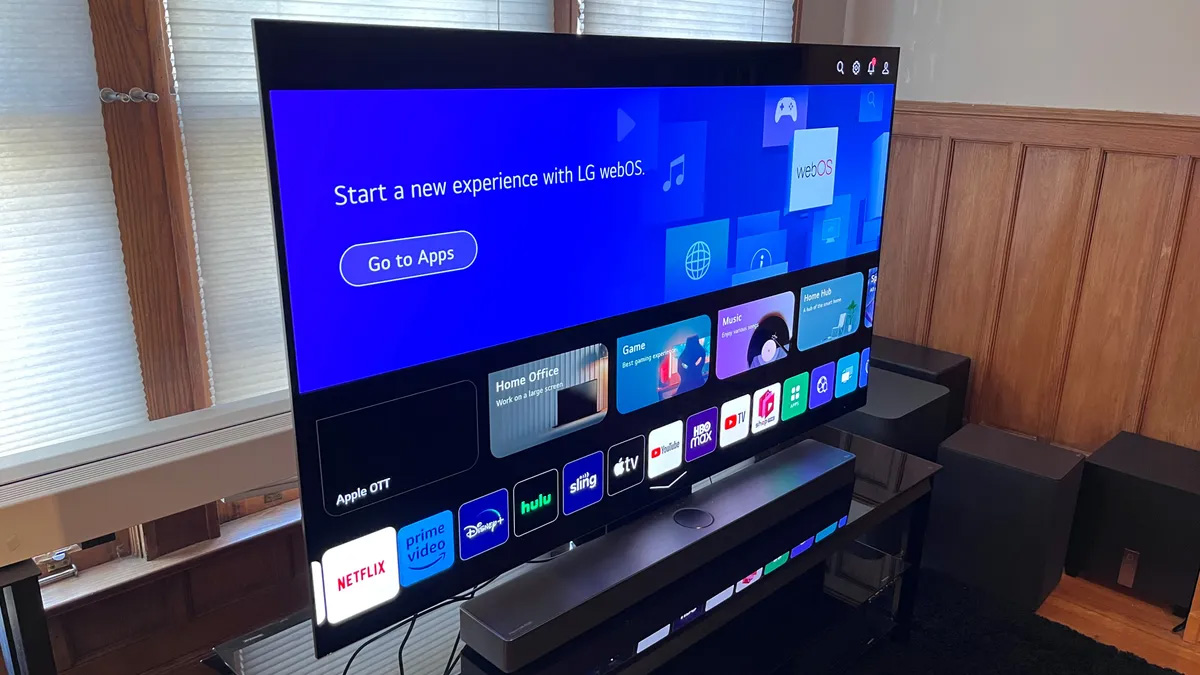We could soon see an end to OLED burn-in – here’s why
A blue OLED breakthrough could be the future for OLED TVs

If you happen to have one of our picks for the best OLED TV, then burn-in might be a nagging concern that sits at the back of your TV-appreciating mind; but there could soon be a panacea to this problem.
That’s because the University of Cambridge (via research published in Nature) have designed ultra narrowband blue emitters that avoid the undesirable energy transfer current blue OLEDs output that can lead to burn-in.
In simple terms, blue OLEDs, which are critical components of RGB displays, are problematic for the longevity of OLED TVs due to their construction and being the least stable of subpixels. Energy transfer from a sensitizer component to an emitter module can affect the efficiency and stability of a blue OLED, both of which can lead to the OLED ageing and the panel falling foul to burn-in.
However, by making use of diodes that emit a blue light along the narrowband spectrum, with an emissive core insulated with alkylene straps, blue OLEDs can be produced that can suppress undesirable energy transfer leading to better efficiency and stability. And using this technique the need for a sensitizer component with a high energy gap matrix (used to curtail energy transfer from the sensitizer to the emitter module) can be bypassed.
In short, this could lead to OLED panels that have a longer lifespan, are more resistant to burn-in and require less complex fabrication. And removing unwanted energy transfer could make for OLED displays that consume less energy leading to TV, phones and tablets with screens that are more energy efficient.
Of course, these new blue OLEDs are at the research phase and would need to be incorporated into future OLED panel manufacturing. But there’s a lot of potential here to bring burn-in-resistant OLED TVs with a long lifespan to the market.
For what it’s worth, I use both an LG C1 OLED TV and the Alienware AW3423DWF monitor with a QD-OLED panel, both of which haven’t shown any signs of burn-in. But these have smart features to help with pixel refreshing and burn-in, whereas less advanced displays might not be as robust.
Get daily insight, inspiration and deals in your inbox
Sign up for breaking news, reviews, opinion, top tech deals, and more.
Continued research into OLED longevity and efficiency is still a welcome thing, even if it takes a long time for breakthroughs to filter down to the consumer TV market. After all, even in the face of mini-LED displays, it doesn't look like OLED screens are going away anytime soon.
You might also like
Roland Moore-Colyer is Managing Editor at TechRadar with a focus on phones and tablets, but a general interest in all things tech, especially those with a good story behind them. He can also be found writing about games, computers, and cars when the occasion arrives, and supports with the day-to-day running of TechRadar. When not at his desk Roland can be found wandering around London, often with a look of curiosity on his face and a nose for food markets.
